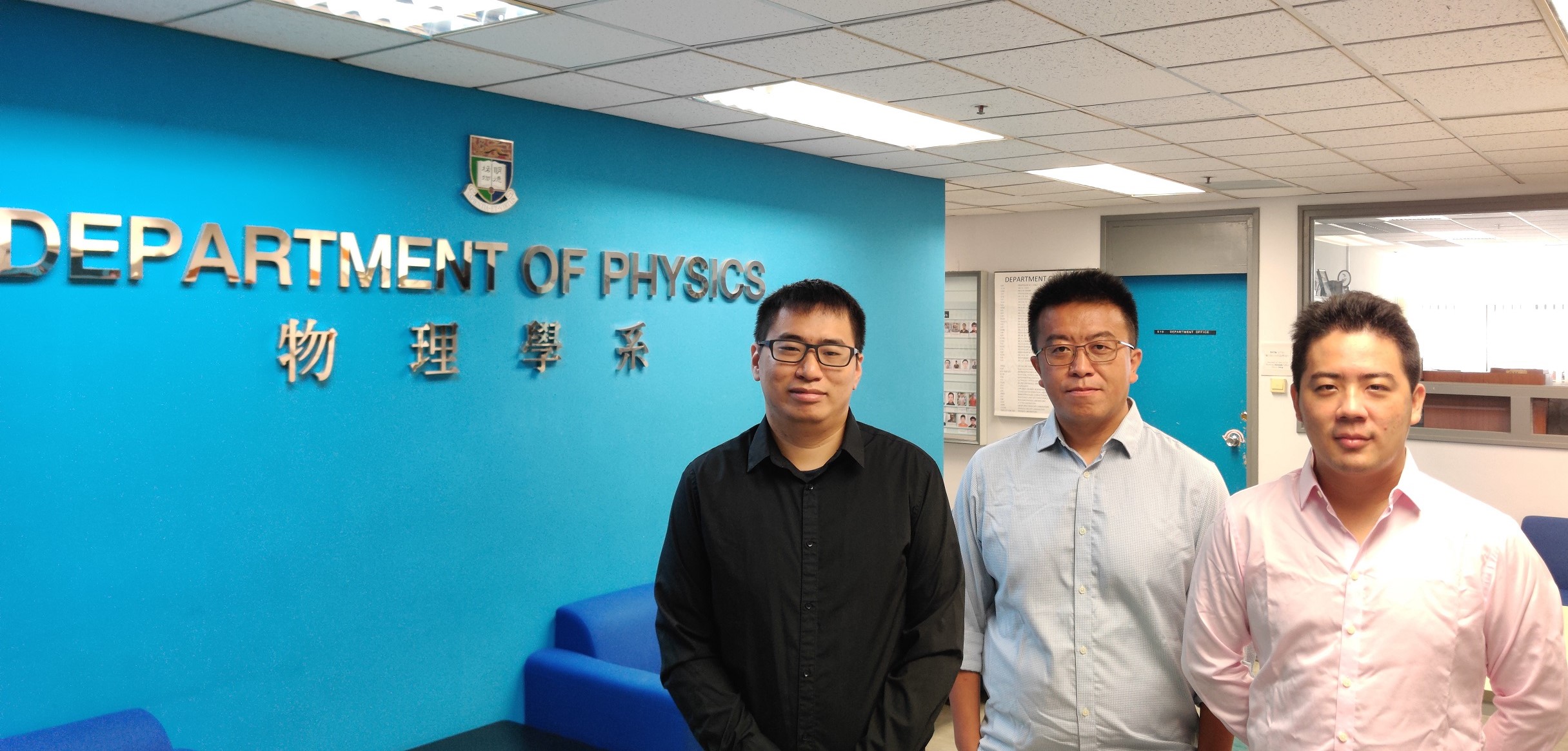

{{'Newsletter' | t}}
Physics PhD Student Obtains the Higgs Mode via Dimensional Crossover in Quantum Magnets

(From left) Chengkang Zhou, Dr. Zi Yang Meng and Dr. Zheng Yan
The Higgs mode or the Anderson-Higgs mechanism (named after Nobel Laureates Peter Higgs and Philip W. Anderson), which contributes to our understanding of the origin of mass of subatomic particles, has widespread influence in our current understanding of the physical law for mass ranging from particle physics – the elusive ‘God particle’ Higgs boson discovered in 2012 – to the more familiar and important phenomena of superconductors and magnets in condensed matter physics and quantum material research.
Both the Higgs mode and the Goldstone mode are caused by the spontaneous breaking of continuous symmetries in the various quantum material systems. The Goldstone mode has been widely observed via neutron scattering and nuclear magnetic resonance spectroscopies in quantum magnets or superconductors. However, the observation of the Higgs mode in the material is much more challenging due to its usual overdamping, which is also the property in its particle physics cousin – the elusive Higgs boson. Researchers have suggested various methods to weaken this damping, such as through quantum critical points, which yielded several remarkable results, and dimensional crossover from high dimensions to lower ones, which achieved fewer successes.
To fill this knowledge gap, HKU PhD student Chengkang Zhou worked together with Dr. Zheng Yan and Dr. Zi Yang Meng in the Department of Physics and designed a dimensional crossover setting via coupled spin chains. They applied quantum Monte Carlo simulation to investigate the excitation spectra of the problem. They collaborated with other researchers, including Dr Hanqing Wu from Sun Yat-sen University, Professor Kai Sun from the University of Michigan, and Professor Oleg A. Starykn from the University of Utah, and observed three different kinds of collective excitation in the quasi-1D limit, including the Goldstone mode, the Higgs mode, and the scalar mode. By combining numerical and analytical analyses, they successfully explained these excitations, and in particular, revealed the clear presence of the Higgs mode in the quasi-1D quantum magnetic systems. All these results can not only help to find out the key model parameters of the material but also reveal a picture of how dimension matters in the condensed material. The findings have been published in one of the most prestigious journals in the field of physics – Physical Review Letters.
In the framework of modern physics, symmetry and dimension are two of the most important factors that determine the properties of quantum many-body physics. The phenomenon caused by dimension reduction is also a key topic in quantum magnetic systems. The research team’s findings provide an attractive model and data support for understanding what an essential role dimension plays in our world, as well as stimulating the development of next-generation quantum material and components.
(This article is adapted from https://www.hku.hk/press/press-releases/detail/22907.html.)
